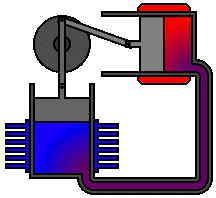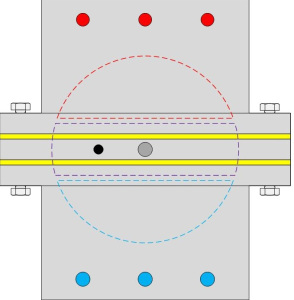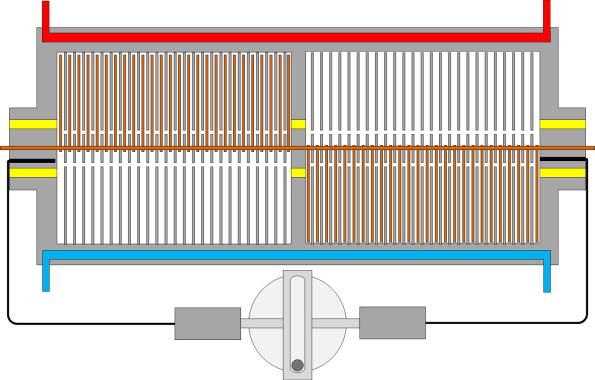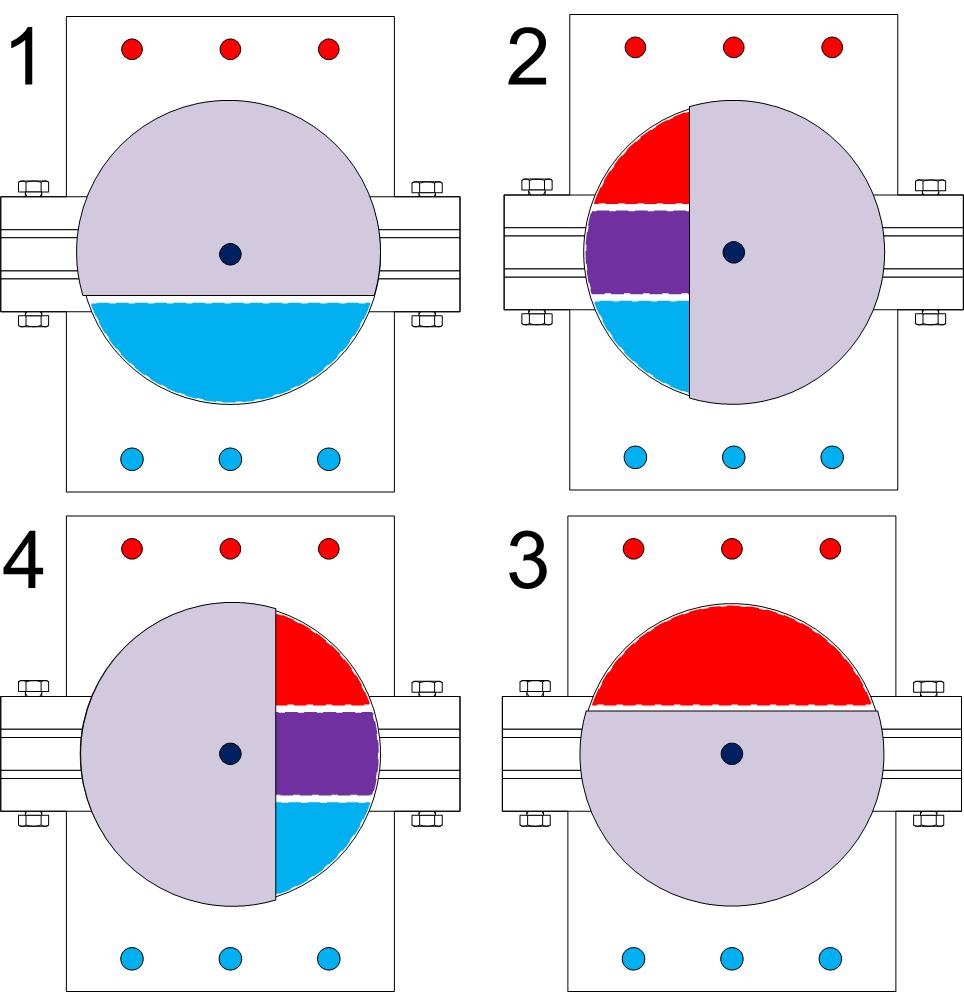Every geeky inventor type has a soft spot in their heart for Stirling engines. It is where elegant engineering meets free-energy no-nothing conspiracy nuts. The history of the Stirling engine that I recall reading is that it was developed by a priest around the turn of the century as an alternative to the steam engine that at that time had a nasty habit of exploding and killing his parishioners.
The basis for a Stirling engine is super simple. Simply attach a piston to an otherwise sealed container of gas. Heat the gas in the container and the piston extends, cool it and the piston retracts. Voilà! Now it is simply a matter of finding creatively efficient ways of cycling the heating and cooling.
So there are a number of conventional designs for a Stirling engine but the two most common are Alpha and Beta types. The beta type works by using a displacer to displace the air on a cold side of a container and then on the hot side. It is geared 90 degrees out of phase with the piston to essentially keep the device chasing its own tail as it were:
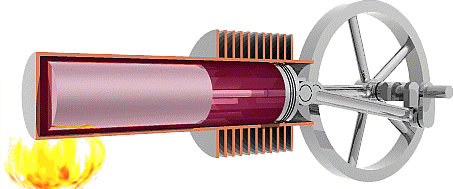
The alpha type works by coupling two pistons and shifting the air between dedicated heating and cooling chambers. While it may initially appear obvious how it works, you can get a much better appreciation of how the volumes are balanced by reading a good guide that breaks down the cycle step by step.
I have spent a couple years tinkering with different designs and have studied existing implementations and always seem to come back around to two ideas though, liquid pistons, which is a subject for another time, and the second is a rotary design. Rotary designs are not completely unprecedented, but I think my specific implementation is unique.
I feel that the major areas to focus attention on in Stirling engine design are:
- Reduction in dead air space
- Integrated regenerator
- Higher operating pressures
This topic of higher operating pressures I have not seen addressed before. Ideal gas laws show that a given temperature change between two volumes of gas at different starting pressures result in final pressures, that while fractionally are equivalent, are greater in the higher pressure vessel in absolute terms. Example below.
Ideal Gas Law: PV=nRT
| Low Pressure Example |
High Pressure Example |
| P=10 | P=100 |
| V=10 | V=10 |
| T=10 | T=10 |
| nR = 10 | nR = 100 |
| if T is raised to 15 then P = 15 | if T is raised to 15 then P = 150 |
| if T is lowered to 5 then P = 5 | if T is lowered to 5 then P = 50 |
| Delta P = 15 – 5 =10 | Delta P = 150 – 50 = 100 |
Of course more energy is required to reap this benefit but the operating temperature differential you need to maintain remains the same.
So here is my design, not the best diagrams so let me describe it first. The engine block is assembled from three blocks that bolt together vertically on top of one another. The top block is a heater, the bottom block is identical to the top block and is for cooling and sandwiched between them is a block for regeneration and through which an axle runs the whole length of the engine block. When the blocks are bolted together they form a pair of hermetically sealed cylindrical cavities that run horizontally down the length of the engine block where the axle runs down the center of them. These two cavities are encased by the outside walls and a center interior wall. The three blocks are bisected by a high number of metal fins that run perpendicular to the axle. The fins are perforated to not only allow for improved lateral air movement but to help generate eddy currents and probably most importantly to take out internal strain that would cause them to otherwise buckle due to the thermal gradient (ever wonder why circular saw blades have those odd cut outs around their perimeter, thats why). The axle has affixed to it semi-circle insulating displacers that run in between each pair of fins. These displacers are out of phase between the paired cylinders such that if one side is displacing the air from between the fins on the heating side, the other side is doing the same to the cooling side. A pressure tap is taken off of both of the cylinders through the outside walls and the power is harvested from the pressure differential between the two cylinders.
Left: Looking at the end of the engine block. Hot block on top, Cold block on bottom, Insulation between blocks in yellow. Axle in center, Black pressure tap off center left, fins revealed in dotted lines.
Right: Looking at a carve away of the the side of the engine block to reveal the cross section. Hot block on top, Cold block on bottom, Insulation between blocks in yellow. Axle and attached displacers in brown running horizontally with left chamber displacing the hot side and the right chamber displacing the cold side. Scotch Yolk linkage below to indicate a humble approach to tap the pressure differential coming off the lines in black.
Below is a diagram to help illustrate how the rotating displacer transports the air over the various fins to yield a power cycle. Displacer is in lavender, air on cold fins blue, hot fins red, purple fins regenerator; displacer rotating clockwise from steps 1 to 4.
- The air is displaced from the hot side and the air is cooled on the cold side causing the pressure in the chamber to go down
- The displacer forces the cool air to pass over the warm regenerator thus pre-heating the air and cooling the regenerator
- The air is displaced from the cool side and the air is heated causing the pressure in the chamber to go up
- The displacer forces the the hot air to pass over the cool regenerator thus pre-cooling the air and heating the regenerator
- Goto step 1
Again, the benefit to having a pair of out of phase cylinder is that the device can run efficiently above ambient pressure. If we were to run only a single side, then the force that could be harnessed from the piston would be the internal pressure versus the ambient atmospheric pressure. By having two pistons that oppose each other, the force extracted is the pressure differential between the two pistons.
